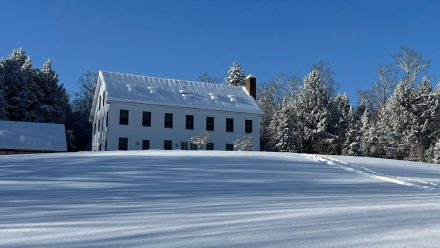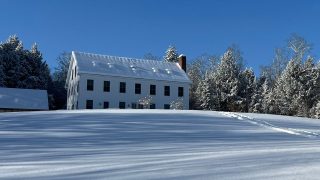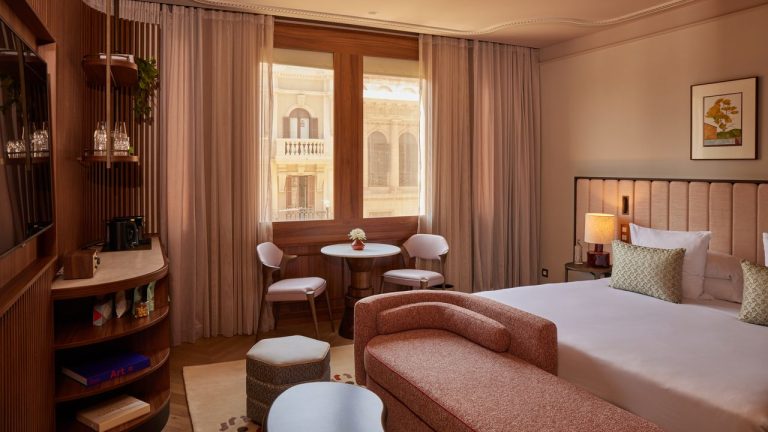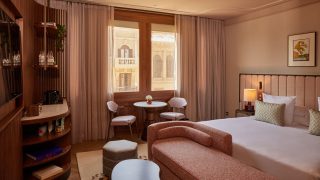“On Location” peels back the curtain on some favorite films, television shows, and more.
“When you read Mary Shelley’s book, it is like a tour of different exotic locations,” production designer Tamera Deverell says of the source material for Guillermo del Toro’s new Netflix film. “It takes place in Lake Como in Italy. It takes place in Switzerland. It takes place in Edinburgh, where we shot. It takes place in the north. It’s a fantastic travelogue.”
For the shoot, Deverell says they focused mostly on Eastern Europe and Edinburgh to keep a fable-like tone. Del Toro wanted as many authentic locations as possible, so he and Deverell spent months scouting across Croatia, Hungary, Slovakia, the Czech Republic, Switzerland, Ireland, and the U.K. “We went everywhere,” Deverell recalls. They ultimately concentrated on the United Kingdom—especially Scotland—and spent time in museums, including a special early visit to Glasgow’s Hunterian Museum to study Evelyn Tables and period medical equipment.
The Arctic North
Frankenstein opens in the Arctic, where the expedition ship Horisont has become beset in ice. Deverell and her team built the entire ship on a Toronto backlot and crafted the surrounding ice. “I was looking at the Franklin Expedition and ships like Terror and Erebus,” she says. To simulate ice they built a metal base, sandwiched Plexiglas, carved Styrofoam for clear areas, and clad it all in wax, fake snow, and real snow. The ship sat on a massive gimbal so it could realistically rock when the Creature assaults it. Some exterior dog-sled scenes were filmed on a frozen lake north of Toronto in North Bay; despite February warmth and melting concerns, ice-checkers ensured safety.
House of Frankenstein
Victor’s ancestral home in the film is a composite of several real estates across England and Scotland: Gosford House in Longniddry, Burghley House in Peterborough, Dunecht House in Aberdeenshire, and Wilton House in Wiltshire. Dunecht provided the long library the production refurbished—floors re-polished, bookshelves built, and walls painted—work Deverell says they couldn’t have achieved by building from scratch. Wilton House’s grand staircase, already familiar to viewers from productions like Bridgerton and The Crown, became a visual focal point. The family villa’s palette was rooted in dark wood, green walls, marble, and stone; Victor’s mother is associated with red, and her red bed travels with Victor through the story.
Edinburgh, Scotland
Parts of Shelley’s novel are set in Edinburgh, so the film shoots there intentionally. They used Parliament Square, Writer’s Close, and Bakehouse Close to capture the narrow, historic, Gothic feel of old Edinburgh, filming along the Royal Mile amid tourists. The production also worked in Glasgow, Aberdeen, and Arbroath. In Arbroath, Hospitalfield House served as Henrich Harlander’s residence; Deverell notes they had to build a period-appropriate bathroom large enough for the scenes. For the circular operating-theater sequence, a genuinely historic theater proved hard to find, so the team referenced London’s Old Operating Theatre and Berlin’s Veterinary School’s Anatomical Theatre and based their set on Glasgow City Hall’s architecture and motifs.
Frankenstein’s Laboratory
The Wallace Tower in Ayr inspired Victor’s laboratory. The production built the tower’s base at the Markham Agricultural Fairgrounds outside Toronto and created eight interior sets in Pinewood Toronto. The tower construction required full blueprints, 3D models, technical drawings, and an 11-foot miniature. Del Toro favored circular motifs—“the circle of life”—so the tower features circular elements like a Medusa motif and a giant rosette window that frames characters; circular designs recur across many sets. Exteriors around the tower were shot in Scotland and supplemented by plates from the Canadian Rockies in Alberta, which VFX used to represent the Swiss Alps seen in the film.
Eastern European Forest and Mill House
After escaping the destroyed lab, the Creature crawls from the sea into a wooded landscape. Deverell wanted a real forest and filmed in Canada’s Rockwood Conservation Area, emphasizing the Creature’s closeness to nature despite being man-made. He hides at a mill house that the production built on a horse farm next to Kleinburg Studios in Canada. The mill was constructed nearly six months before filming to avoid winter issues; wood shingles, plaster, and molded stone walls were aged naturally on set. At the last minute Deverell added a Green Man sculpture to the roof to heighten the Creature’s connection to the natural world—a small, costly detail she insisted on and that she says “just made the movie” for her.






